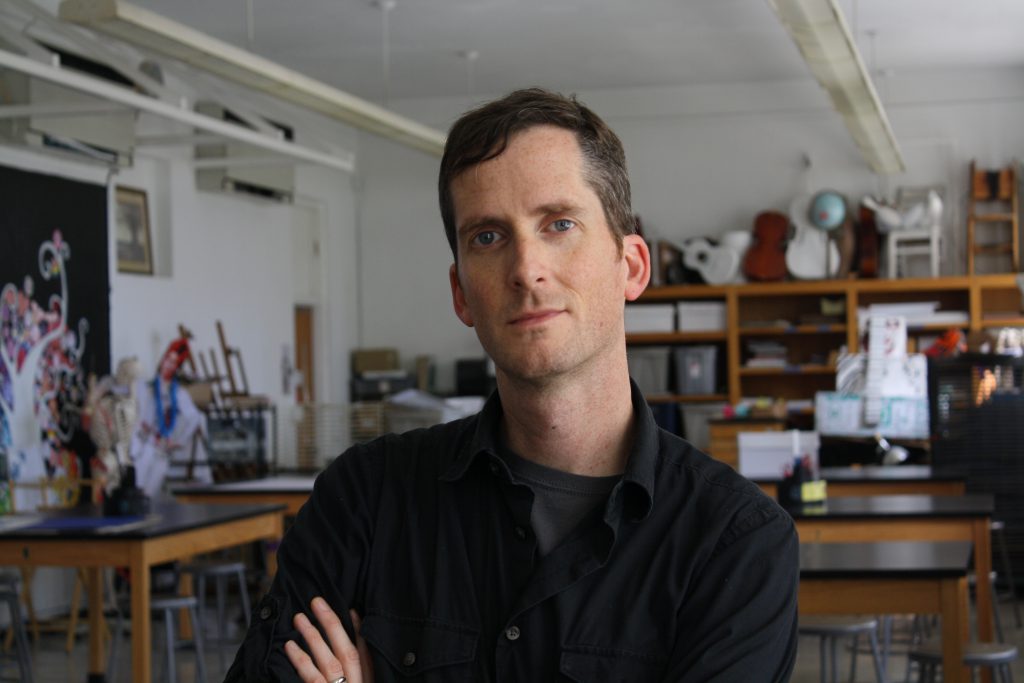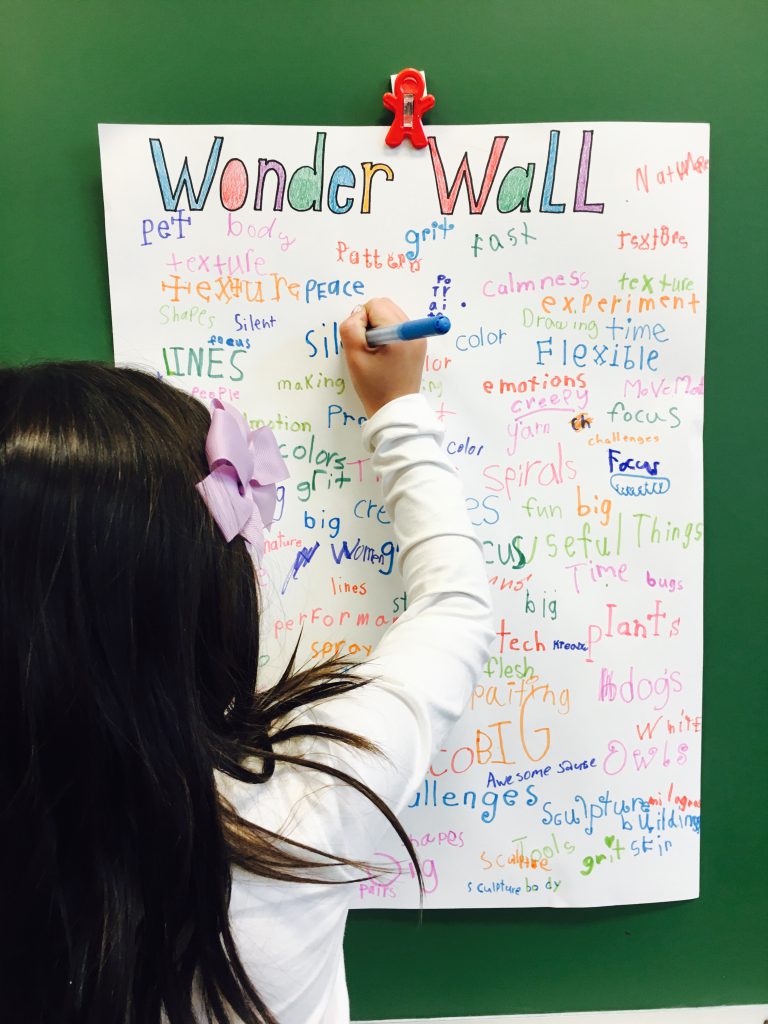Our series spotlighting the incredible members of the Art21 Educators community picks up again with teacher Jack Watson. Based in North Carolina, Jack teaches Art History and Visual Art classes at Durham School of the Arts.
With more than ten years of experience in the classroom, Jack Watson joined Art21 Educators in the program’s third year, and has been an active, fundamental member of the community ever since. He even joined us to lead the Media Remix Experiment with artist Mark Bradford at our Creative Chemistries symposium last spring.
Why were you initially drawn to the Art21 Educators program?
Like many, I was a fan of the PBS series first, and I tried to work the videos into my teaching wherever possible. In grad school, I learned how to develop curriculum incorporating contemporary art practices, but in my classroom I still felt like I was the only teacher interested in doing this. I learned about the Art21 Educators program from Oliver Herring, who was in town for a residency at the University of North Carolina. I attended his TASK party, not just as a teacher but as a fan of his work. It was an unforgettable experience, and it sparked something in me and the small group of students who came with me. Afterwards, he visited my classroom, and started a conversation with my students about art as experience and process, and this might sound like hyperbole but we were forever changed. I did not know there was an Art21 Educators program, but he suggested I look into it and I applied as soon as I was able.
How would you describe the Art21 Educators program?
I get tongue-tied when I try to describe it to people, because it is so many things: a creative laboratory, a graduate school, a family. At its essence, it is a network of creative educators interested in working with the ideas and practices of contemporary art. Because the definition of “contemporary art” is so fluid and diverse, so is the nature of this program. It can’t be distilled down to a few bullet-point ideas, as if it were some new district initiative with a catchy acronym. There are times when it is about developing curriculum, but there are also times when it is about forming creative collaborations or starting little revolutions within our spheres of influence. The people who make up the program are some of the most thoughtful and engaged educators I have ever encountered.
How has Art21 Educators changed your practice?
While I ended up at Art21 because I was already heading in a certain direction, the educators program has catapulted me further into contemporary practice, and armed me with resources and collaborators that I couldn’t have found otherwise. Before I went to Oliver’s TASK party, I felt very alone in my interests. Few in my district had heard of Art21 or cared much for contemporary art. What I hoped to find at Art21 was a group of like-minded teachers who were going through the same process of discovery that I was going through—educators who were embracing contemporary practices and ideas. What I found surpassed my expectations, and I’m still processing its impact.
My classroom is a more engaged and collaborative space as a result of Art21 Educators. I see myself as an artist/educator, collaborating with artist/students. I see the classroom as a space of possibility, a space for creative experiences, a work of art in its own right. As a result of Art21, my students get to interact with students in other parts of the world and see videos about artists who look like them and reflect their interests.
How do you continue to stay involved with Art21?
I have stayed in contact with many of my fellow educators over the years, and have gotten to know educators in other cohorts by returning for the alumni summer institute or conferences and so on. We continue to meet online, formally and informally. Fortunately, there is so much going on at Art21 that there is a lot to get involved with! I have presented and led workshops with other educators at conferences and, most memorably at Art21’s Creative Chemistries event. I have been involved with planning the institutes, and most recently I have served as a mentor to the new cohort of educators, which has been incredibly rewarding. I think all of the mentors agree that we are learning as much from them as they may be from us.
What are you most excited about for the current school year with Art21?
I was so excited to see that this year’s group of educators has fully embraced art that is not only experiential and process-oriented, but that is based in social justice issues. There was no learning curve here, they were already on that path. The ideas they are exploring are relevant and challenging, and it validates my interest in going deeper in this direction. It also helps that the artists of Season 8 are cut from the same cloth; artists like Minerva Cuevas and Theaster Gates are making politically-charged work that has social utility. This has inspired me to create a collective at my school called Art + Action, which brings together students from different arts backgrounds to work together at the intersection of art and activism. I look forward to seeing where this takes us.
Describe a specific work of art, artist, or exhibition that has recently inspired you or your teaching practice.
It took time for it to sink in, but Laylah Ali’s John Brown project made me rethink ways to make meaning in artwork. I loved how it was this open-ended, educational (but not-at-all didactic) exploration into a person whose role in history has been reduced to a few lines in a middle school history book. I’m also inspired by Lee Walton, an artist and educator out of Greensboro, NC, who makes these really beautiful systems-based drawings (using pitch-by-pitch data from baseball games for example) as well as experiences based in interaction. He helped me understand that teaching is a kind of social practice.
Stay tuned for Jack’s creativity exercises, which will be published on the Art21 Magazine throughout November.



